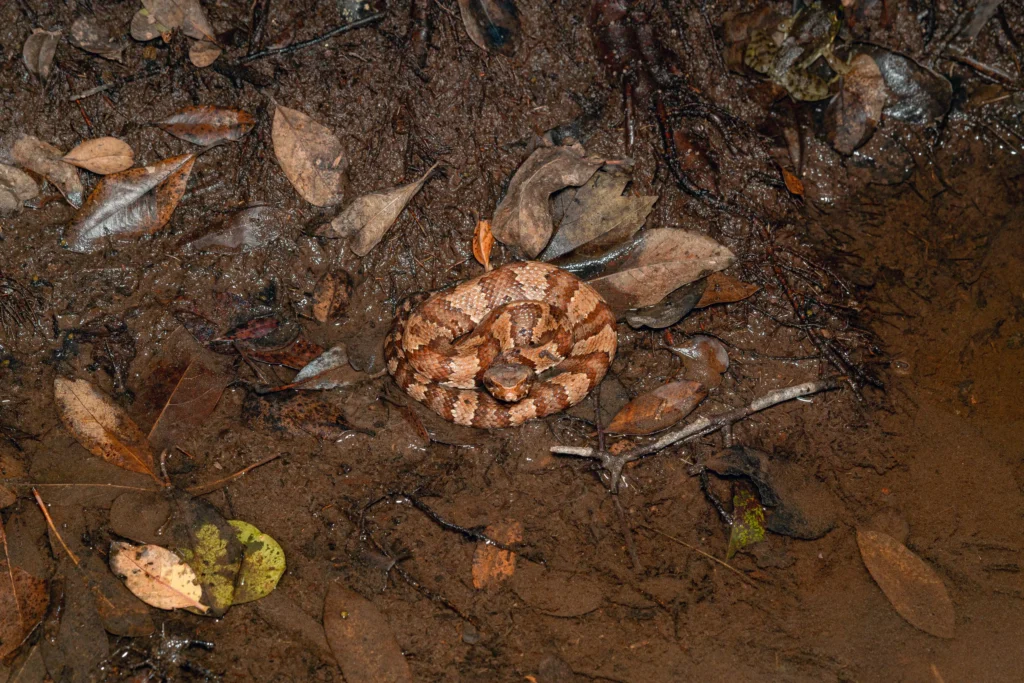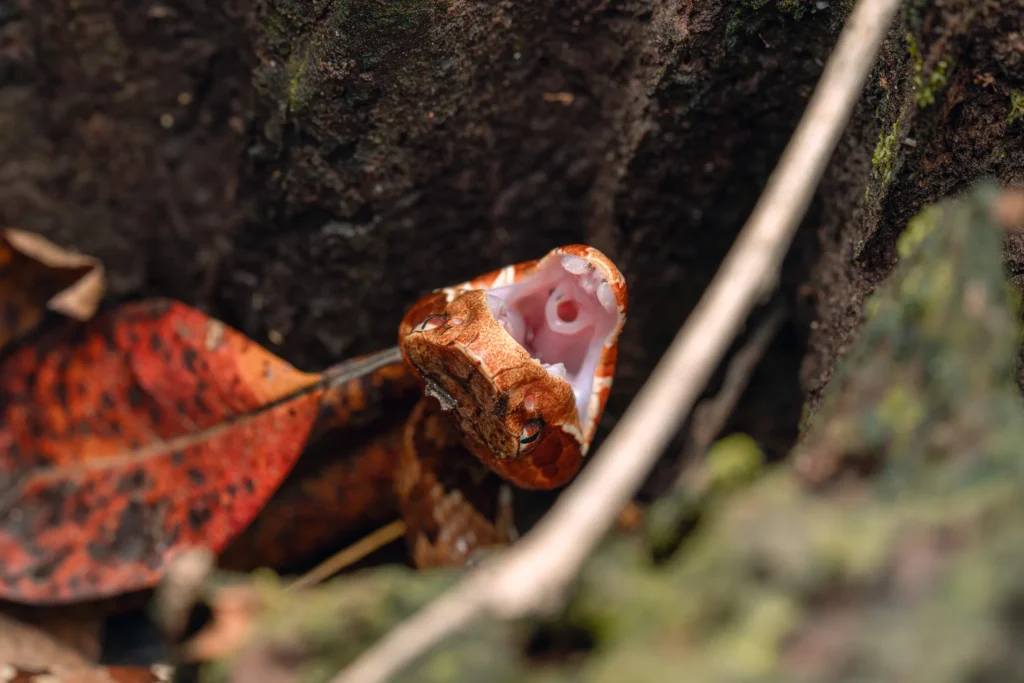Cottonmouth / Water Moccasin
Agkistrodon piscivorus
On my journey to photograph all six of Goergia’s venomous snakes, we went trekking through some creeks at night in search of another cool pit viper and found what we were looking for.
The cottonmouth (Agkistrodon piscivorus), also known as the water moccasin, is one of Georgia’s six venomous snakes and is the third of six that I have had the opportunity to photograph in the wild. The cottonmouth is a pit viper. Pit vipers make up five of those six venomous snakes with the sixth being the coral snake which is an elapid – like a cobra. I have a feeling the coral snake will be the last one I check off my list. But, today, we’re here for the cottonmouth. I do not encourage anyone to get this close to a venomous snake unless you are trained to do so.

As we trekked through the creek, we kept a close eye on the waters and the bank hoping to find a cottonmouth. The first one that we found wasted no time in just trying to get away. It immediately dipped into the water and disappeared into the mud and roots never to be seen again. This is typical behavior for them. Contrary to tales, cottonmouths do not actively chase people. If a person feels like a snake is chasing them, it’s usually because the snake is trying to escape and the person inadvertently gets in its way.
Their diets consist of small mammals, birds, amphibians, fish, frogs, other snakes, small turtles, and even small alligators. Juveniles, like the one I photographed, may feed on insects, too. I wasn’t able to find whether adults will also eat insects. An interesting part of their diet is that they will eat carrion (dead animals) which is not something relatively uncommon among snakes. All of that to say, humans are not on the list.

The one that I found and was able to photograph was coiled up on the bank of a creek. It sat patiently as one of us went by, hoping we wouldn’t notice it, and as I crept up to take the first photograph. Right after my first photo, it chose to flee to its left toward a hole near the bank that was covered by roots and leaves. We carefully guided it away with a snake hook to see if we could get it in a more photogenic spot. After a moment, it crossed the creek and settled in a small, hollowed stump.
After it settled in the stump, it opened its mouth to do the signature cottonmouth defensive pose. I waited for it to calm down and, hopefully, realize that we weren’t trying to eat it before I took the last few photos of its face then bid it farewell. During this entire interaction, it never once struck at the snake hooks or toward us.
Once again, I would never encourage anyone to get close to or handle venomous snakes without proper training and safety precautions. I took my photos from a safe distance with a buddy nearby equipped with a proper snake hook that regularly handles venomous snakes in a lab and field setting.
Most cottonmouth bites occur when people attempt to kill the snakes, step on them, mishandle them, or confuse them with non-venomous species. While the juvenile we found had a nice, bright color and pattern, the adults can be much darker and could be mistaken for a brown water snake (see Neroida taxispilota). Their venom has powerful cytotoxic properties that can destroy tissue and cells. It’s reported that deaths are rare but their bites can result in significant scarring or amputations as well. This venom not only helps them take down prey, but also helps them in their digestion of swallowed prey. They would still much rather flee and give plenty of warning to non-prey items before deciding to bite them.
Enjoy the small gallery below. I highly encourage you to zoom way in on these photos 😍
